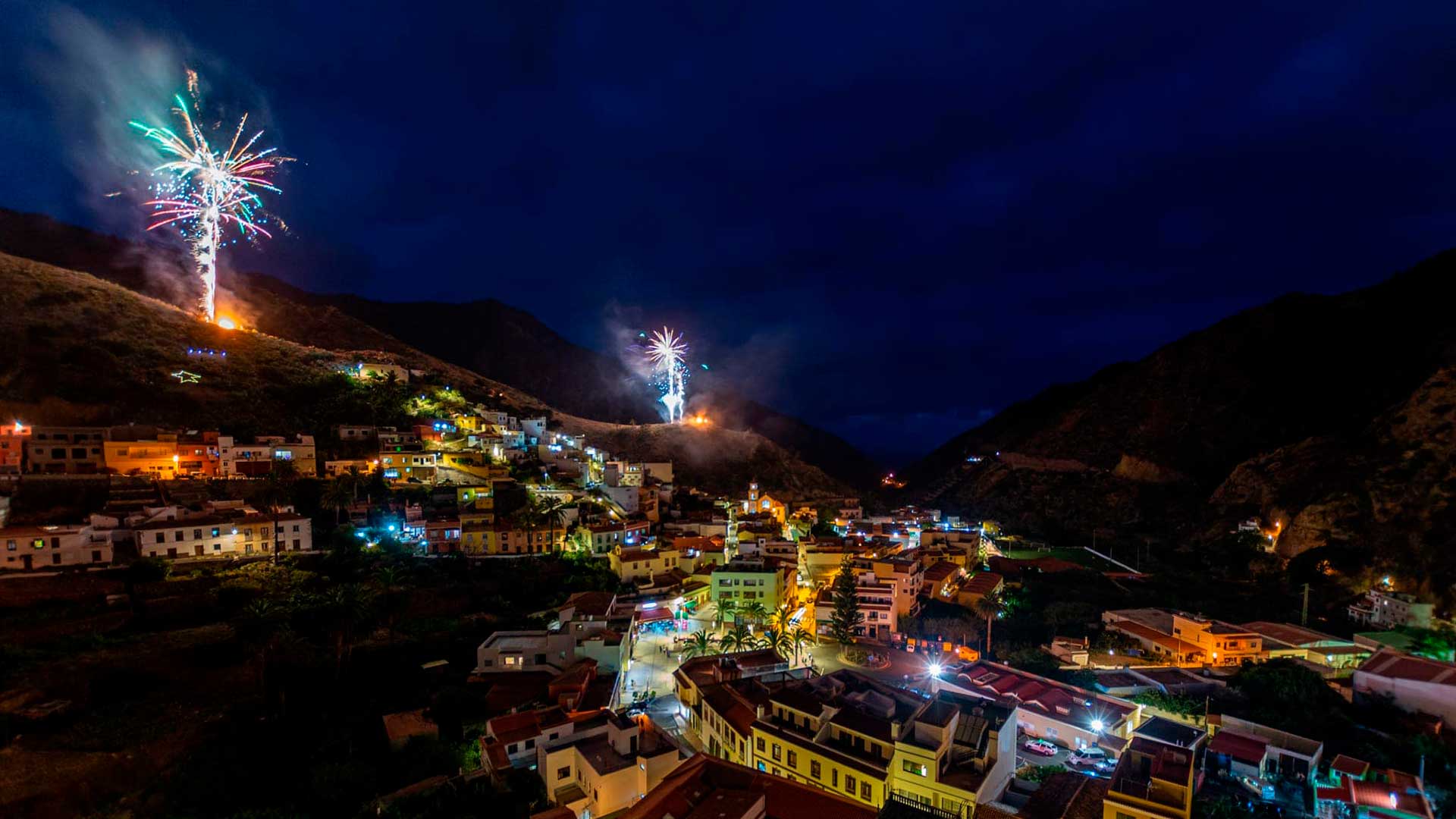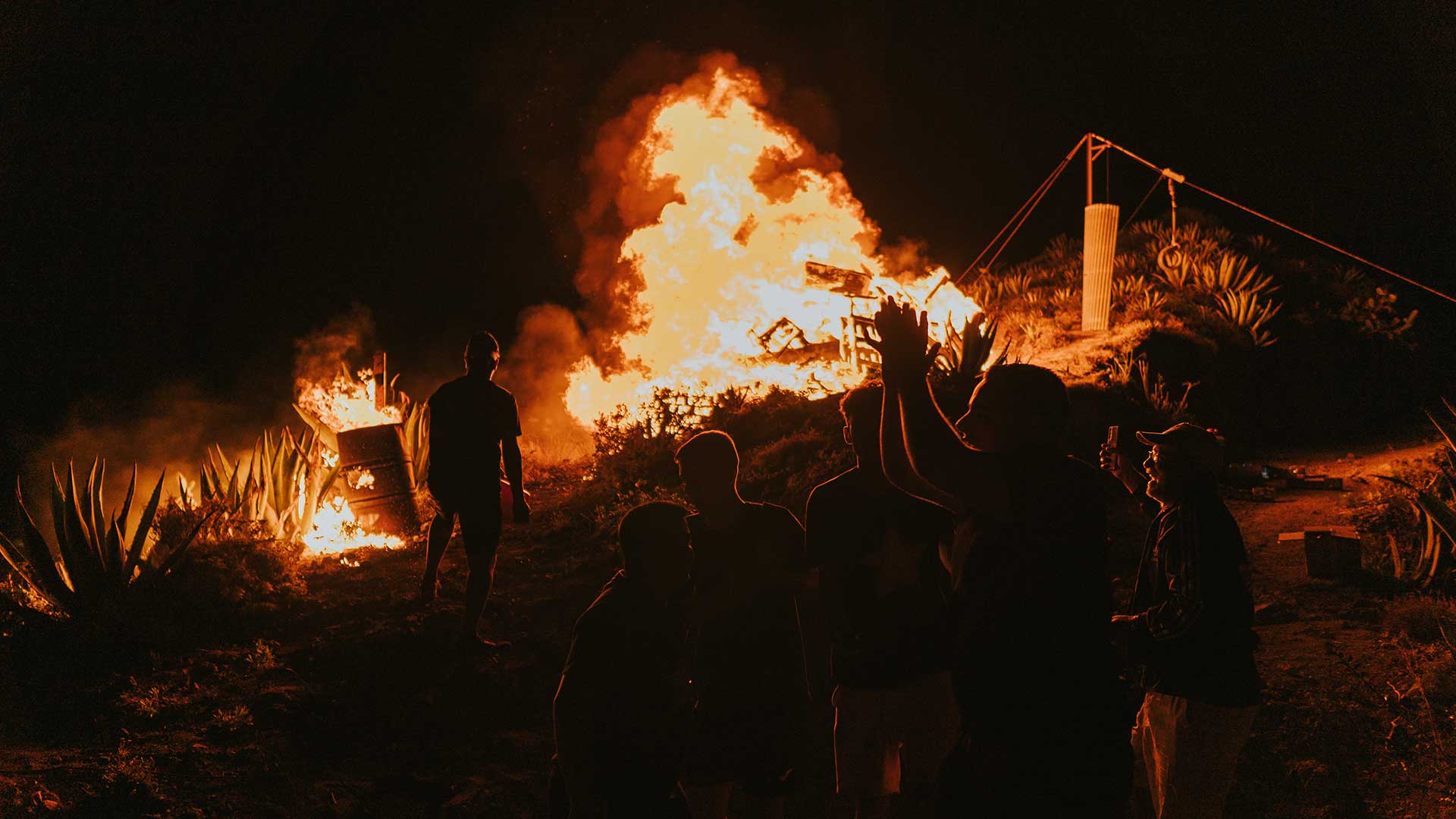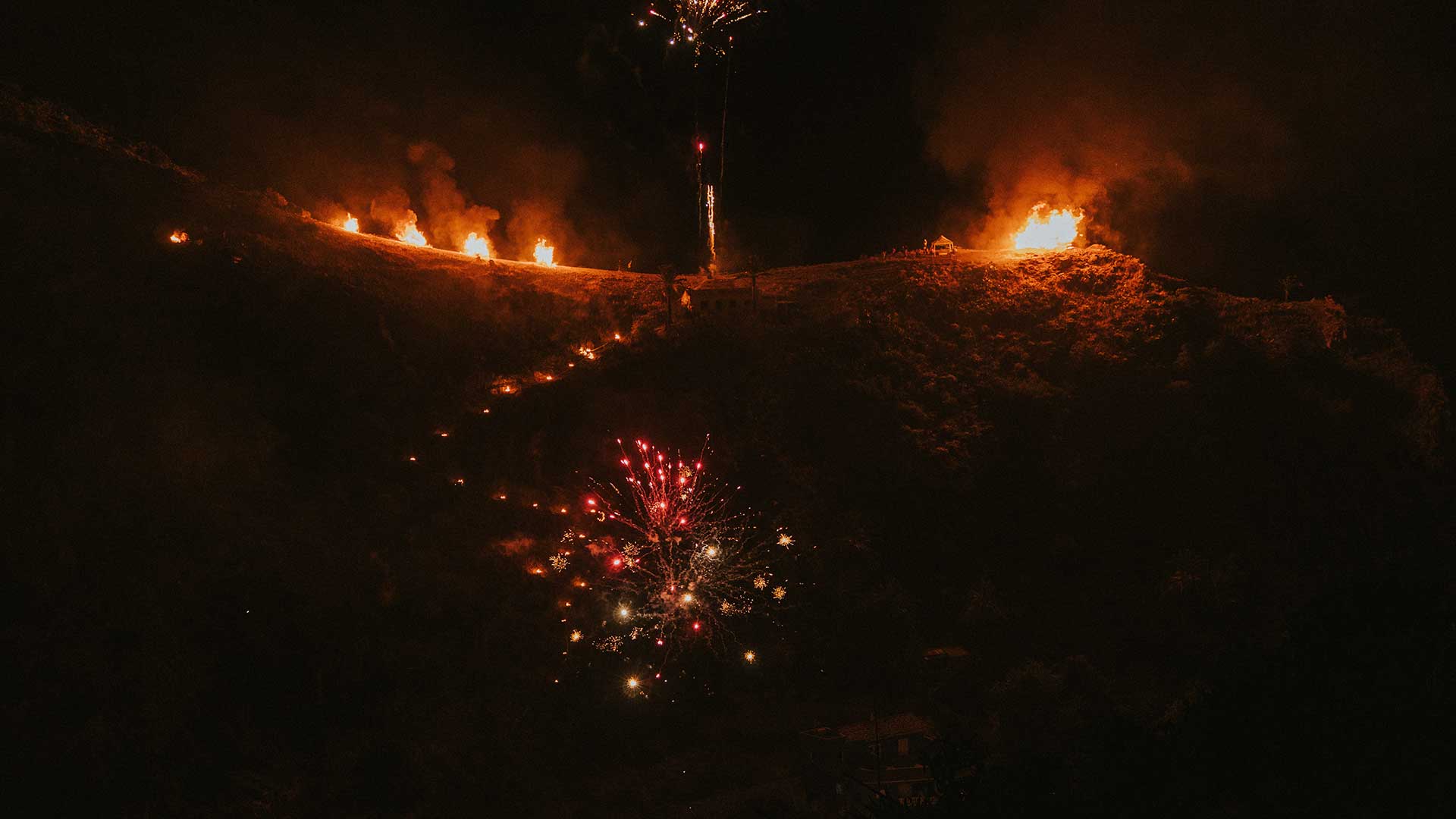Learn about the origin of the bonfires of San Juan in Vallehermoso
It is impossible to pinpoint the origin of this celebration in the municipality of Vallehermoso. However, it seems clear that the relationship between the municipality and the patronage of San Juan Bautista has existed since the beginnings of the Castilian history of the population center. This could be corroborated by toponymic references to the San Juan ravine or mentions of San Juan de Vallehermoso, present in the topical Datas of the first notarial protocols or references in visits by episcopal order.
If we consider that the current parish is located where an ancient hermitage under the same name used to be, and there are written references stating that the latter – although not in the form that is preserved today – was established as a parish in 1635, we must note that the origin of the worship dates back, at least, to the late 16th and early 17th centuries. Since then, not even a global pandemic like the one that started in 2020 has stopped its celebration.
There are references, with respect to other islands, that place the first celebrations of San Juan, with all its set of related symbols – bonfires, flowers, processions, etc. – around 1580, relating them to prayers 'for health and better weather.' However, other earlier sources relate these elements associated with our festival to festive practices prior to the Christianization of the islands.
That is, linked to indigenous festivities that took place at the beginning of the harvest season or the summer solstice and that, as can be seen in their dissemination and their survival in so many towns on the islands, managed to overcome the attempts at annulment that the Catholic Church undertook on all those practices suspected of paganism.


